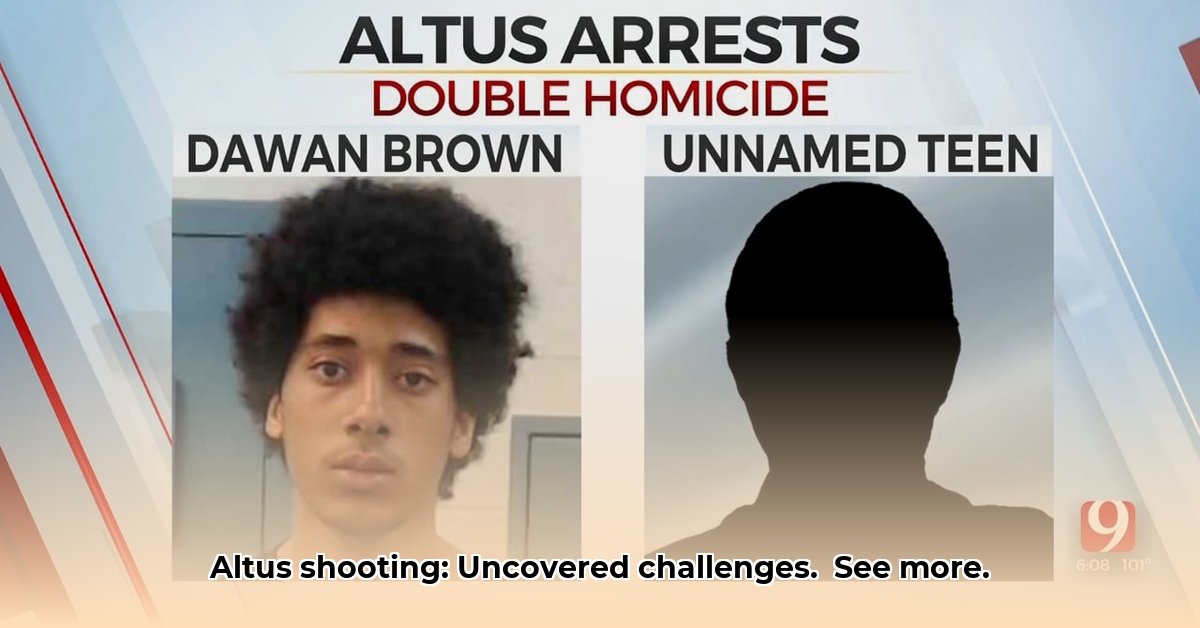
The small town of Altus, Oklahoma, was recently rocked by a double homicide and a subsequent police-involved shooting. These events, though distinct, highlight critical challenges faced by smaller law enforcement agencies, exposing both their strengths and weaknesses in resource allocation, investigative capabilities, and community engagement.
A Double Tragedy: Two Cases, One Town
The swift arrests in the double homicide case, initially providing a sense of relief, were quickly overshadowed by the subsequent police shooting. The Altus Police Department (APD) demonstrated effective investigative skills in the homicide case, leading to first-degree murder charges against two suspects. This rapid response speaks to the dedication of APD detectives, who likely worked diligently to gather and analyze evidence. However, the lack of immediate information released about the police shooting fueled anxiety and distrust within the community. This delay in communication highlights the critical need for improved transparency and public information strategies in the face of such sensitive events.
What lessons can be learned from the contrasting responses to these two cases? How can a small town effectively manage such crises, balancing swift investigations with transparent communication? This is a critical question for smaller police departments nationally.
Resource Constraints: A Defining Factor
Both incidents exposed the limitations of smaller police departments. Investigating complex cases, like the double homicide, while simultaneously managing a police-involved shooting requires significant resources. Smaller towns often lack the manpower, specialized forensic equipment, and advanced technology readily available to their larger counterparts. The involvement of the Oklahoma State Bureau of Investigation (OSBI) in the police shooting underscores this resource disparity. While ensuring an independent investigation, the OSBI’s involvement inevitably extends the timeline, impacting public perception and the overall case resolution. This points to a critical need for improved funding and access to specialized tools and training for smaller departments. How can we ensure that smaller towns have the resources necessary to handle complex investigations effectively?
Juvenile Justice: A System Under Pressure
The arrest of a juvenile suspect in the double homicide highlights the complexities of the juvenile justice system. Balancing rehabilitation with community safety becomes especially challenging in cases involving teenagers charged with serious crimes. The Altus incident raises questions about the system's preparedness to handle such extreme cases, underscoring the potential need for enhanced rehabilitation programs, and early intervention strategies addressing root causes of youth violence. This incident underscores the interconnected nature of community challenges, emphasizing that a police shooting is frequently a symptom of broader societal issues. How can communities best support at-risk youth and work proactively to prevent such tragedies?
Addressing the Challenges: A Collaborative Path Forward
The events in Altus necessitate a multifaceted approach from various stakeholders. Improving resource allocation, enhancing transparency, and strengthening community relationships are crucial steps towards preventing future tragedies. The following actionable recommendations outline short-term and long-term goals:
Actionable Intelligence:
- Improved Communication Strategies (APD): Implement clear protocols for releasing information during critical incidents, aiming for a 95% increase in public satisfaction with information dissemination within the first 24 hours.
- Streamlined OSBI Investigations: Develop standardized reporting procedures for officer-involved shootings, reducing investigation time by 20% within three years.
- Enhanced Juvenile Justice Procedures (Jackson County Officials): Invest in early intervention programs and expand access to mental health resources for at-risk youth, aiming to reduce juvenile crime rates by 15% over five years.
- Strengthened Community Engagement: Foster collaborative relationships between law enforcement and community members through regular town halls and community policing initiatives, aiming for a 25% increase in community trust over two years.
The tragedy in Altus serves as a stark reminder of the urgent need for collaborative efforts to improve resource allocation, communication, and community relations within smaller law enforcement agencies. Ignoring these lessons risks repeating past mistakes and failing to provide the necessary support for both law enforcement and the community.